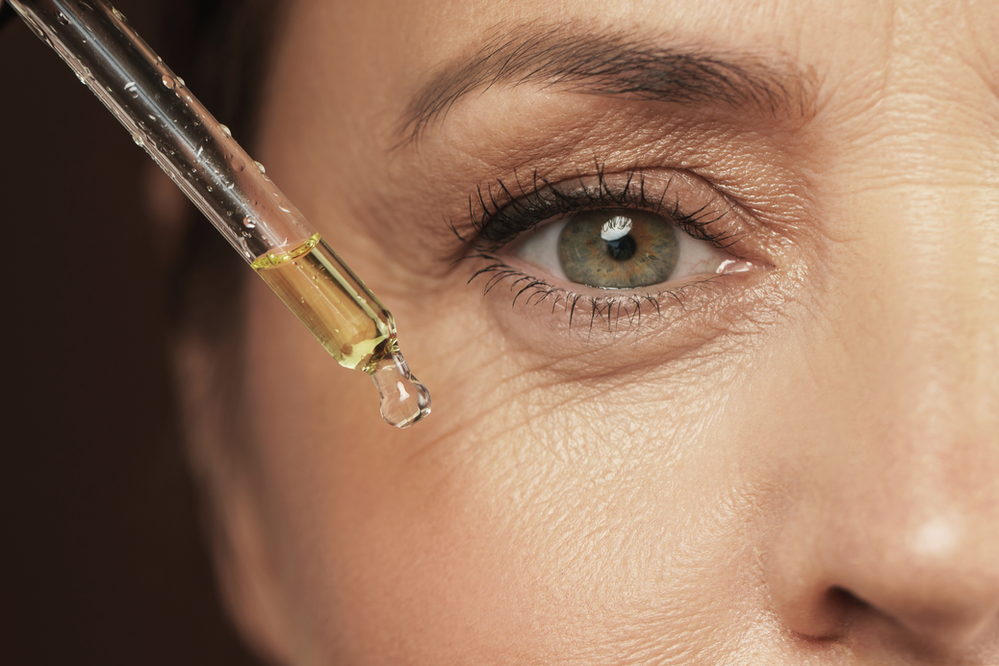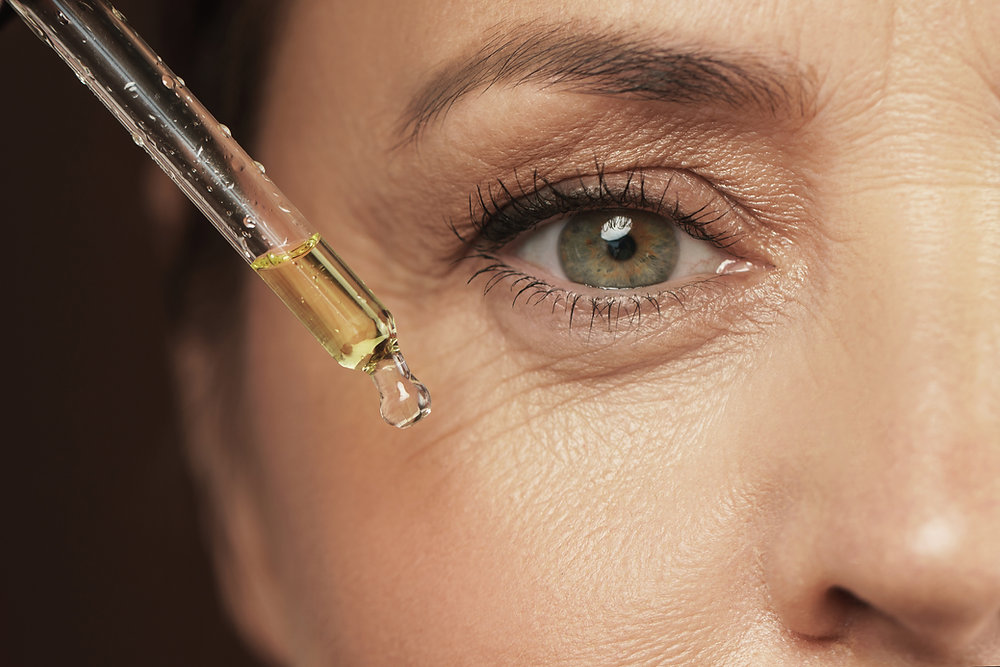
While you may not believe it, not all wrinkles are bad. Wrinkles help to highlight your facial features and give your face a unique character. Without wrinkles, your face would be void of personality and expressiveness. Your face is unique to you, no one has one just like it, and the lines and curves of your face help to tell your story. However, I must admit I don’t like wrinkles that make me look older or tired. So let’s power on to get a better understanding of wrinkles, the types of wrinkles, how they are formed and how we can minimize them.The two major types of wrinkles: Dynamic and StaticDynamic Wrinkles appear when expressing emotions, such as fear, worry, joy, sadness, or surprise. You will notice them when you smile, laugh, frown, cry, or during moments of deep concentration. Dynamic wrinkles fade as quickly as they appear. Once the emotion passes and your face goes blank, you will no longer see them. Common dynamic wrinkles include: smile lines; frown lines; forehead line; and crow’s feet. Dynamic lines are also known as expression lines. Unlike the rest of the body where each end of the muscle is connected to bone, on your face one end is connected to bone but the other is connected to skin. So each time you smile or frown you are pulling on the skin which eventually creates a crease in the skin. Static Wrinkles are dynamic wrinkles that are etched into the skin over time. They remain even after our facial muscles have relaxed, and they tend to deepen with age. They are typically a source of frustration and can make one look older than their actual age. Examples of static wrinkles include lines at the corners of the mouth, across the cheeks, and along the neck. When we repeat our expressions over time, the associated creases deepen and become more permanent, taking the form of fine lines between our brows, crow’s feet in the outer corners of our eyes and laugh lines around our mouth. As you age, collagen production declines and the skin loses elasticity. As a result, dynamic wrinkles, such as smile lines around the mouth will eventually become static wrinkles. Fine lines and wrinkles can be further emphasized by sun, lack of sleep, stress, genetics, smoking, pollution and a poor diet. To slow down the formation of expression lines, look for ingredients that increase the elasticity & the strength of your skin. Here are some examples:
Retinol speeds up cell metabolism and promotes more organized cells that soften the look of lines. I especially like Level Up. This potent retinol contains retinaldehyde which stimulates cell production to form younger looking, smoother skin. note: Level Up does have a yellow tinge that you may not like on your pillow case at night. I avoid this by doing my night time routine earlier in the evening so it has a chance to dry by the time I actually go to bed. If you’re really opposed to this mild inconvenience, try our gentler version Retinol Resurfacing Cream. Vitamin C is a vital component for collagen production. More collagen means stronger, more resistant skin. It is also an excellent antioxidant that protects from some of the damage done by UV light. The human body does not produce Vitamin C naturally, which means we get all our Vitamin C through diet, oral supplementation, and topical application. So, daily application is important. (You can get 60% of what the skin on your face needs by using a Vitamin C Serum daily.)Products with architectural peptides which are the building blocks of proteins. Peptides are not only super hydrators, but they send signals to build collagen and give the skin a more plump and wrinkle – free look. Resveratrol boosts cellular antioxidant defenses, and increases cellular lifespan. It improves elasticity in the skin, reduces sensitivity and addresses deeper signs of aging. As an antioxidant, resveratrol helps to prevent free radical damage, which dermatologists now recognize as a leading cause of age spots and wrinkles.Dehydration LinesAs we grow older, our sebaceous glands responsible for secreting oil begin to shrink. Without this protective layer the skin loses its ability to stay hydrated and takes on a dry, crepey texture, forming fine criss cross lines wherever it is lacking water. You can see superficial dehydration if you stretch your skin apart with two fingers and discover there is crepey skin there that looks a little like an onion skin. This is one of the markers your esthetician uses when examining your skin. To replenish your skin’s moisture, I recommend adding serums that contains humectants like glycerin or hyaluronic acid to your regime and sealing that in with an emollient moisturizer. If you’re very dehydrated you may need to step up your exfoliating serum. It’s very hard to moisturize these dead, dry cells, so removing them will reveal softer, smoother, more hydrated skin. When dehydration goes on for a long time, eventually your skin looses moisture in the lower layers. We call this deep dehydration and it leads to lines and eventually wrinkles. There’s a simple test to measure deep dehydration. Using your thumb and index finger, pinch the fleshy part of your skin where the cheek and under eye area meet. When you do this, your skin may appear “tented” for a moment, or stuck in the shape of your pinch. Your hydration level is indicated by how quickly the skin snaps back into place. The quicker it snaps back, the higher the level of hydration. Skin that returns to its usual position more slowly often indicates deep dehydration.Quick lifestyle tips to keep skin well hydrated:Get 8 to 9 hours sleep.Limit showers to 5 to 10 minutes, and use lukewarm water.Drink enough water.Limit coffee and alcohol.Limit or avoid smoking.Switch to a gentle cleanser.Eat a varied diet that’s rich in essential fatty acids.Use products containing ceramides, hyaluronic acid, lipids, and fatty acids.Use a hydrating sleep mask.Protect your skin from the sun, wind, and cold.Reenforce your skin’s barrier.Try to reduce your stress levels.Compression LinesAfter a deep night’s sleep, these tiny pleats appear on the face, neck and chest and are caused by compressing your face against your pillow while you sleep. While these grooves often disappear during the day, if you don’t alter your sleeping habits they can eventually stay put over the long term. Aside from sleeping on your back, I recommend applying a rich, hydrating moisturizer at night and a neck cream before bed. You neck has much fewer sebaceous glands than your face so it is more susceptible to getting lines. Neck creams are also useful if you scrunch up your neck while you sleep. They become a welcome addition to your skincare regime if you spend lots of time on your phone looking down, which makes you susceptible to getting tech neck.RhytidesRhytides is the medical name for wrinkles. If you’ve started noticing thin, delicate lines appearing on places like your neck or eyelids, these are fine static lines. These types of wrinkles typically appear on skin that has thinned out over time and they disappear almost completely when the skin is stretched. The cause for these lines is a gradual loss of elastic fibers and collagen fibers caused by intrinsic aging and especially from damage from UV light. Sun avoidance is the best preventive measure. Rhytides may be improved by the use of regular LED Red Light Therapy and Microneedling treatments. Both signal fibroblasts to start to repair collagen and elastin structures in the skin. Which ever lines and wrinkles bother you most, an esthetician and dermatologist can offer customized therapies for your unique skin type.Elizabeth believes in “Longevity Skincare”, the idea that beautiful skin can endure throughout one’s lifetime when utilizing the best that science and nature has to offer. LONGEVITY is a science – based skincare line that appreciates skin of all ages. LONGEVITY by Elizabeth Renee provides hydration, nutrition and protection from environmental aging. Your skin will receive high performance ingredients to help energize and repair its cells, resulting in a healthy skin with an enduring, vital glow.
